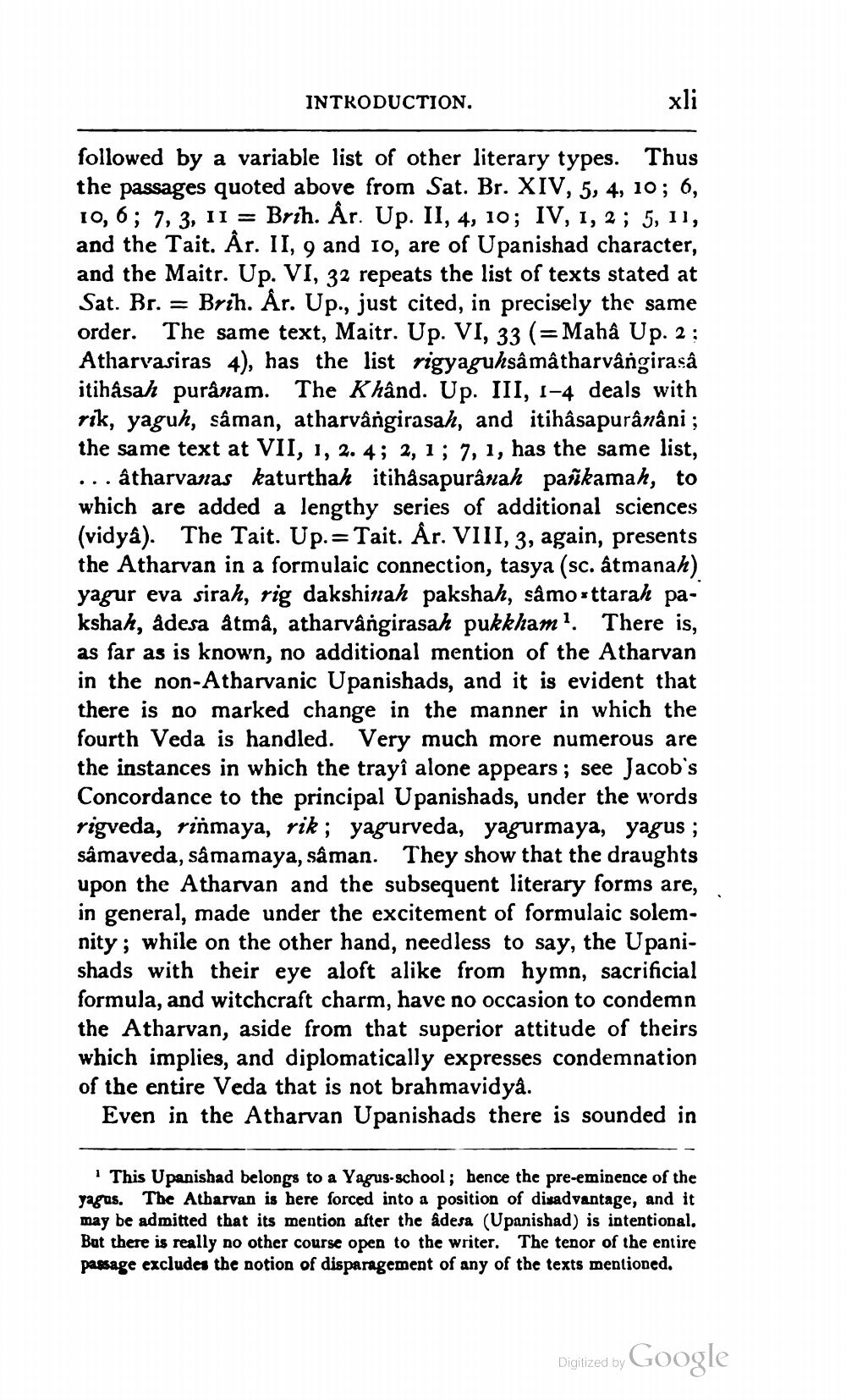________________
INTRODUCTION.
xli
followed by a variable list of other literary types. Thus the passages quoted above from Sat. Br. XIV, 5, 4, 10; 6, 10, 6; 7, 3, 11 = Brih. Ar. Up. II, 4, 10; IV, 1, 2 ; 5, 11, and the Tait. År. II, 9 and 10, are of Upanishad character, and the Maitr. Up. VI, 32 repeats the list of texts stated at Sat. Br. = Brih. År. Up., just cited, in precisely the same order. The same text, Maitr. Up. VI, 33 (=Mahâ Up. 2; Atharvasiras 4), has the list rigyaguhsâ mâtharvângirasa itihasah puranam. The Khând. Up. III, 1-4 deals with rik, yaguh, saman, atharvângirasah, and itihâsapurânâni ; the same text at VII, 1, 2. 4; 2, 1; 7, 1, has the same list, ... atharvanas katurthah itihåsapurânah patikamah, to which are added a lengthy series of additional sciences (vidya). The Tait. Up.=Tait. År. VIII, 3, again, presents the Atharvan in a formulaic connection, tasya (sc. âtmanah) yagur eva sirah, rig dakshinah pakshah, samosttarah pakshah, adesa åtmå, atharvangirasah pukkham. There is, as far as is known, no additional mention of the Atharvan in the non-Atharvanic Upanishads, and it is evident that there is no marked change in the manner in which the fourth Veda is handled. Very much more numerous are the instances in which the trayî alone appears; see Jacob's Concordance to the principal Upanishads, under the words rigveda, rinmaya, rik; yagurveda, yagurmaya, yagus ; sâmaveda, samamaya, saman. They show that the draughts upon the Atharvan and the subsequent literary forms are, in general, made under the excitement of formulaic solemnity; while on the other hand, needless to say, the Upanishads with their eye aloft alike from hymn, sacrificial formula, and witchcraft charm, have no occasion to condemn the Atharvan, aside from that superior attitude of theirs which implies, and diplomatically expresses condemnation of the entire Veda that is not brahmavidya.
Even in the Atharvan Upanishads there is sounded in
This Upanishad belongs to a Yagus-school; hence the pre-eminence of the ragas. The Atharvan is here forced into a position of disadvantage, and it may be admitted that its mention after the adesa (Upanishad) is intentional, But there is really no other course open to the writer. The tenor of the entire passage excludes the notion of disparagement of any of the texts mentioned.
Digized by Google
Digitized by




